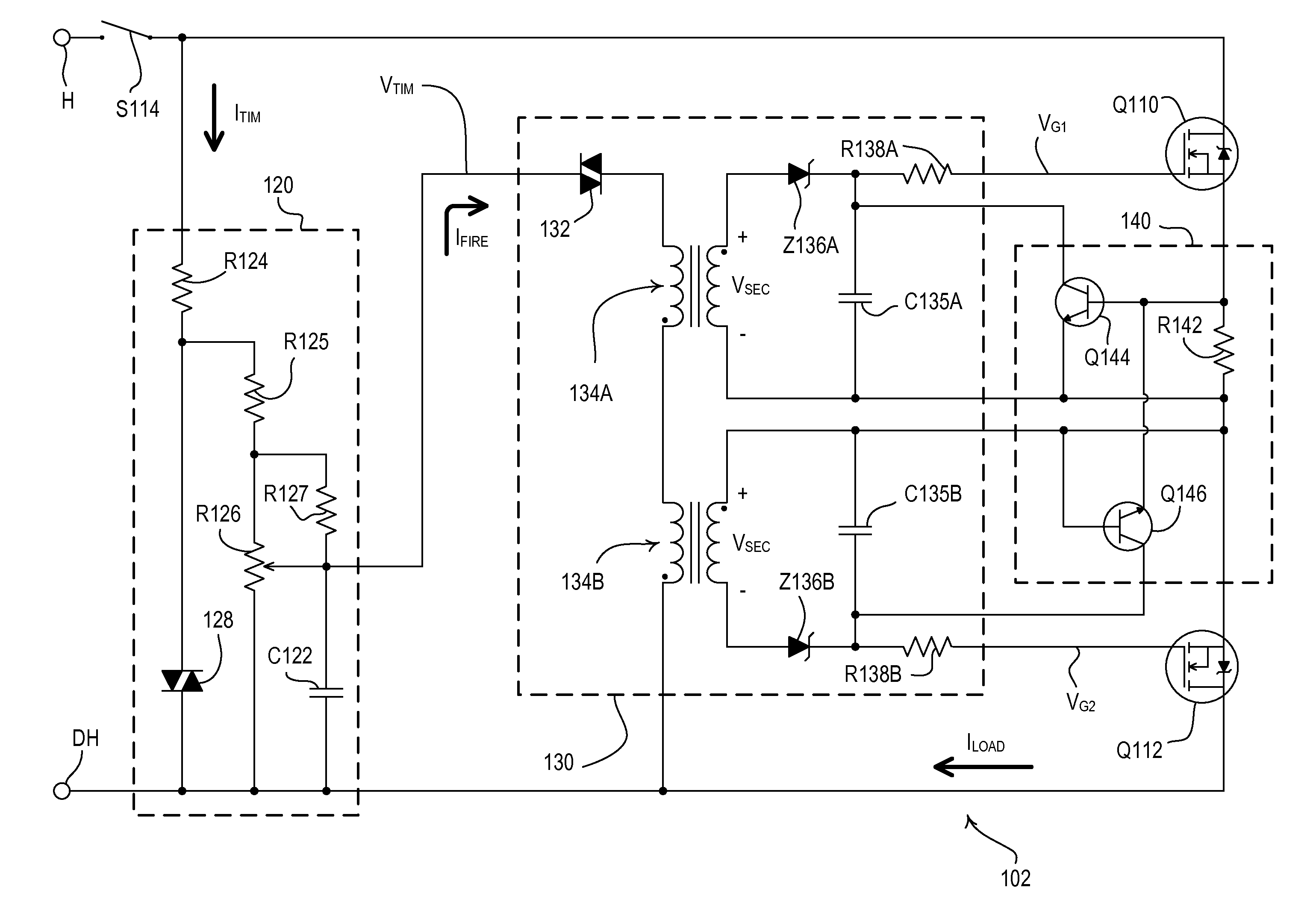Two-wire analog fet-based dimmer switch
a dimmer switch and analog technology, applied in the field of load control devices, can solve the problems of increasing the cost of prior art fet-based reverse phase control dimmer switches, load to illuminate, and high-efficiency light sources typically consume less power and provide longer operational li
- Summary
- Abstract
- Description
- Claims
- Application Information
AI Technical Summary
Benefits of technology
Problems solved by technology
Method used
Image
Examples
first embodiment
[0036]FIG. 2 is a simplified schematic diagram of the dimmer switch 102 according to the present invention. The dimmer switch 102 comprises a bidirectional semiconductor switch having two individual switching transistors, e.g., two field-effect transistors (FETs) Q110, Q112, coupled in anti-series connection between the hot terminal H and the dimmed hot terminal DH for control of the amount of power delivered to the LED driver 104. The FETs Q110, Q112 have control inputs (i.e., gates) that receive respective gate voltages VG1, VG2 and channel regions that are rendered conductive and non-conductive in response to the respective gate voltages VG1, VG2. Specifically, the FETs Q110, Q112 are rendered conductive when the magnitudes of the respective gate voltages VG1, VG2 are controlled to a nominal gate voltage VN (e.g., approximately 9 V) and are rendered non-conductive when the magnitudes of the respective gate voltages VG1, VG2 are controlled to approximately zero volts. The FETs Q11...
second embodiment
[0046]FIG. 4 is a simplified schematic diagram of a dimmer switch 202 according to the present invention. The dimmer switch 202 comprises a drive limit circuit 250, which is coupled in series with the diac 132 and the primary windings of the two pulse transformers 134A, 134B of the drive circuit 130. The drive limit circuit 250 operates to limit the number of times that the drive circuit 130 attempts to render the FETs Q110, Q112 conductive during a specific half-cycle. For example, if the overcurrent protection circuit 140 renders one of the FETs Q110, Q112 non-conductive, the drive limit circuit 250 prevents the drive circuit 130 from attempting to render the respective FET conductive again during the present half-cycle.
[0047]When the diac 132 fires each half-cycle, the drive limit circuit 250 conducts the firing current IFIRE and generates an offset voltage VOFFSET across a capacitor C252A during the positive half-cycles and a capacitor C252B during the negative half-cycles. The ...
PUM
| Property | Measurement | Unit |
|---|---|---|
| Electric potential / voltage | aaaaa | aaaaa |
| Time | aaaaa | aaaaa |
| Power | aaaaa | aaaaa |
Abstract
Description
Claims
Application Information
 Login to View More
Login to View More - R&D
- Intellectual Property
- Life Sciences
- Materials
- Tech Scout
- Unparalleled Data Quality
- Higher Quality Content
- 60% Fewer Hallucinations
Browse by: Latest US Patents, China's latest patents, Technical Efficacy Thesaurus, Application Domain, Technology Topic, Popular Technical Reports.
© 2025 PatSnap. All rights reserved.Legal|Privacy policy|Modern Slavery Act Transparency Statement|Sitemap|About US| Contact US: help@patsnap.com



